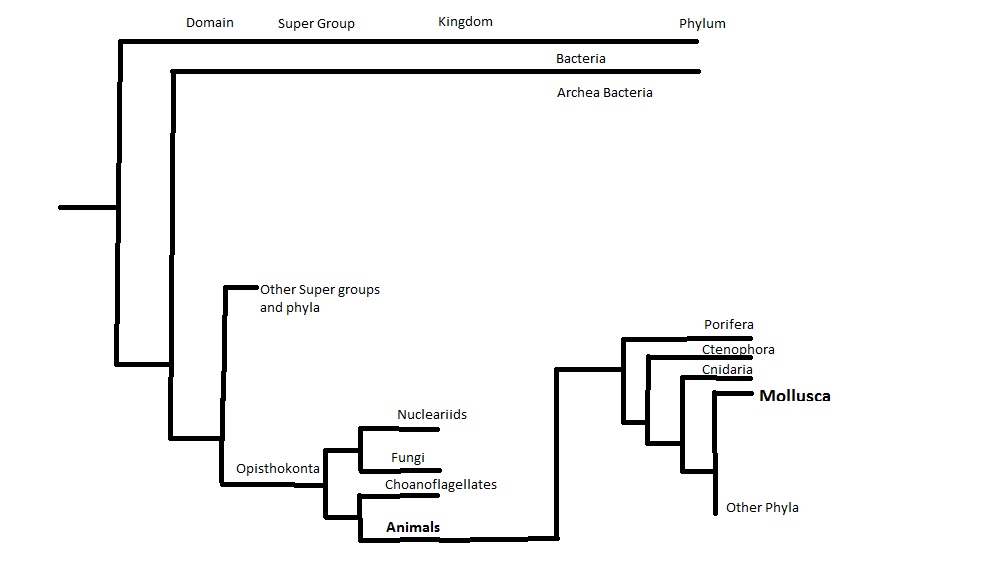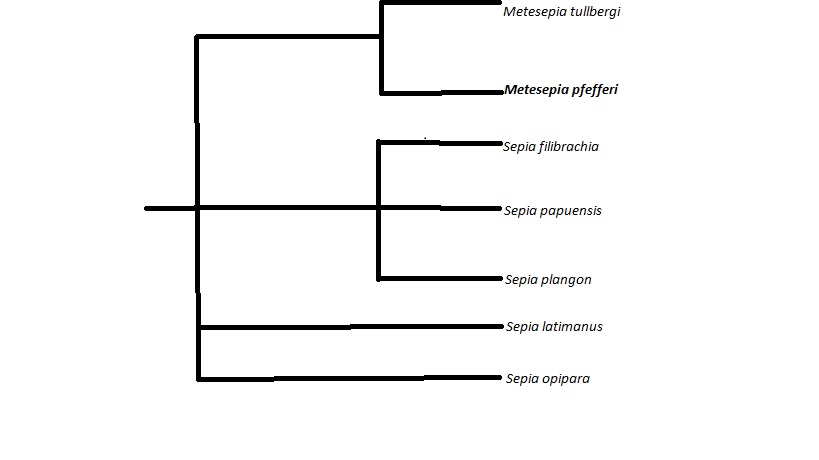.jpg)
Classification
Domain- Eukarya- This domain can contain single-celled or multicellular organisms. They all have a nucleus and other functioning organelles. The three main ways Eukarya gather food is by being heterotrophic, autotrophic, or detritivores. A Mantis Shrimp is an example of a Eukaryote.
Kingdom- Animalia- To be considered under the phylum animalia, you must be heterotrophic. The organism must also be motile at one stage in their life cycle, and lack a cell wall. Another example from the kingdom animalia is the Platypus.
Phylum- Mollusca- A mollusk is one of the most advanced phylum of the invertebrates. They have many adaptations such as shells, keen eyes, beaks, and many more. To be considered a mollusk, it must be a coelomate and have cephalization (presence of head). They all have a mantle and some contain a tongue like organ called a radula used for eating. A species with a radula is the Brown Hive Snail.
 ^^^This
phylogenic tree is based on the current classification of known species.
This shows were the Metasepia pfefferi is located all the way to the
phylum Mollusca.
^^^This
phylogenic tree is based on the current classification of known species.
This shows were the Metasepia pfefferi is located all the way to the
phylum Mollusca.
Class- Cephalopoda- This is one of the four classes that make up the phylum mollusca. The class cephalopoda have a defined head shape, and have a closed circulatory system. They are all dioecious which means they have male and females in different bodies. They also have very advanced nervous systems and eye sight. One more unique thing about this class is that they have Chromatophores. More on that later. For another example of Cephalopoda, check out the Octopus vulgaris.
Order- Sepiida- Although it is still in progress, the classification of sepiida is based on the phylogenetic tree that places them in different orders based on Gene and protein sequences. You may also see morphological differences in each order for example, sepiida was classified by its calcified shells (cuttlebone) and tentacle apparatus.
^^^ The Phylogenic Tree above explains a small branch of the Family Sepiidae that includes Metasepia pfefferi. This phylogenic tree is based off morphology.
Family- Sepiidae- This is similar to the way sepiida was organized. It is based off genetic information and morphological characteristics. This is mainly the cuttlebone of this family.
Genus- Metasepia- This genus is specifically organized based on the shape of the cuttlebone. It is diamond shaped and shorter than the mantle. Since this is the only genus of this organism, there is little to classify it here. The name sepia comes from the brownish-reddish color of their ink. Meta means change.
Species- pfefferi- This species name is also unique to one species so it follows the line of the genus Metasepia.
Where is this species located? Click here
